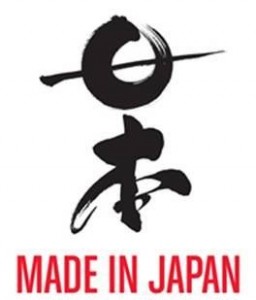 This post is re-published with kind permission of the author.
This post is re-published with kind permission of the author.
This post is the 1st of a 2 parts article. Proceed to Part 2.
Author: Himmy, Twitter: @himmy0730.
When looking underneath the surface of the Japanese fashion industry, a fundamental shift is taking place. In fact, the Japanese fashion industry has no other choice than to be more ethical if they want to keep growing in the future. Here are some reasons why and how that comes into being:
For customers to give credit to apparel makers and brands, quality, as much as price, counts the longer the more. In the recession, the cheapest deal was what consumers generally were after. They either bought fast fashion, or stopped purchasing new items altogether. However, now, after a few years of hardly consuming at all, people are tired with the situation, and per-head consumption is on the raise again. As it happens though this development is mainly lead by the medium to well off consumers, with an annual income of 5Mio Yen and above (~50’000$).
It is important to realize though that the average consumer is equally interested in fashion whether they earn a lot and have cash to spare, or whether their budget is rather tight. This is a fact that certainly also applies to the vast number of consumers at the bottom of the Japanese income pyramid earning less than 2Mio Yen (~20’000$) a year. The lack of disposable income does not change the fact that their awareness and tastes for consumption, too, have been coined by our information society.
The huge popularity of H&M, Zara, or Forever21 on the one hand, and efforts by Japanese fashion companies to compete with these fast fashion brands on the other, made it clear that consumers do neither have to, nor want to, trade off between attractive design and price. Previously, the Japanese consumer was brought up firmly in the belief that for designs a-la-mode a (high) price must be paid. While now the prices for fashionable items have come down, the quality argument nevertheless remains at least partially: Cheap prices are not the only reason for buying anymore. Consumers now expect ‘cheap’ fashion to be up to ‘sensible’ quality standards. “Is this item actually worth being bought at all?” is a frequently heard question.
Over the last couple of decades, Japanese fashion companies managed to keep their low prices thanks to outsourcing production to manufacturing units in China. But, workers’ wages in the Chinese textile industry have been raising steadily, and in the past 6 months went up by about 10%. In the time since May this year (2010), environmental controls in China have also become considerably tougher, and wages for workers in the apparel manufacturing industry in the Shanghai area, rather then once a year, had to be raised twice already. In addition, the price for raw cotton has raised by over 10% to an all time high, and the price of acrylics is also on the raise. If adding this to the raise in wages, cheap-and-fast fashion made abroad is encountering considerable head wind.
But not enough – being employed in one of the manufacturing units in the textile belts around Shanghai, Shenzen, or Guangzhou is becoming increasingly unpopular among Chinese workers. Instead, they prefer to look for work in other industries, or other geographical areas altogether. Apparel manufacturing being a labour intensive industry, is having a hard time recruiting the workers needed to fulfill the orders on the books.
As a consequence of all the mentioned developments in China, many Japanese companies suffered from delivery delays and a massive decline in product quality. And as if that were not enough trouble to deal with already, Chinese suppliers started to avoid orders from Japan, as Japanese orders tend to come in small lots, and in many different styles. The manufacturers, understandably, prefer to focus on and deal with European and American buyers, who tend to order larger quantities in fewer styles. The Chinese manufacturers’ focus on European (or American) orders, would even lead in some cases to Japanese orders being turned down entirely due to ‘lack of available capacity’.
Faced with this situation, about 6 months ago Japanese firms started to look for new suppliers in SE Asia. But with the geographical distance and the time required for shipping to Japan – a process that in itself can take over 2 months – many of those orders suffered again from a high risk of being delayed and not making it on time to Japan.
—
This post is the 1st of a 2 parts article. Proceed to Part 2.

